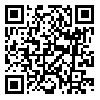Articles accepted at the time of publication
Back to the articles list |
Back to browse issues page
1- Department of English Language Teaching, Farhangian University, Tehran, Iran , masoumeahmadi@cfu.ac.ir
2- Department of English Language Teaching, Farhangian University, Tehran, Iran
2- Department of English Language Teaching, Farhangian University, Tehran, Iran
Abstract: (1273 Views)
For decades, both researchers and EFL learners have been interested in native-like pronunciation. While extensive research has delved into a variety of pedagogical approaches and the complexity of English phonology, an unanswered question is how high-proficiency EFL learners achieve the elusive goal of native-like pronunciation in spoken English. To this end, this multiple-case study aimed to explore the multifaceted strategies employed by 15 high-proficiency EFL learners who had mastery in pronunciation and were selected using the maximum variation sampling method. Data was gathered through the use of diaries and in-depth semi-structured interviews. The data was analyzed with NVivo software version 10, and two main themes were extracted: teacher-directed (TD) and self-directed (SD) pronunciation learning strategies. Regarding the TD strategies, some participants (46%) acknowledged actively engaging with structured tasks and assignments facilitated by teachers. They highlighted the role of in-class (36%) and out-of-class (64%) activities in their journey to master pronunciation. The SD strategies were reported by about half of the participants (54%) in their quest for pronunciation mastery, which included self-talk (48%), podcast listening (29%), shadowing (12%), and reading aloud (11%). This study contributes valuable insights into relevant literature and offers evidence of the interconnectedness of TD and SD strategies in pronunciation improvement. The findings have several implications for further research or practice about pronunciation mastery.
Keywords: pronunciation, pronunciation learning strategies, teacher-directed strategy, self-directed strategy, in-class activity, out-of-class activity
Article Type: مقالات علمی پژوهشی |
Subject:
language teaching
Send email to the article author
| Rights and permissions | |
 |
This work is licensed under a Creative Commons Attribution-NonCommercial 4.0 International License. |






